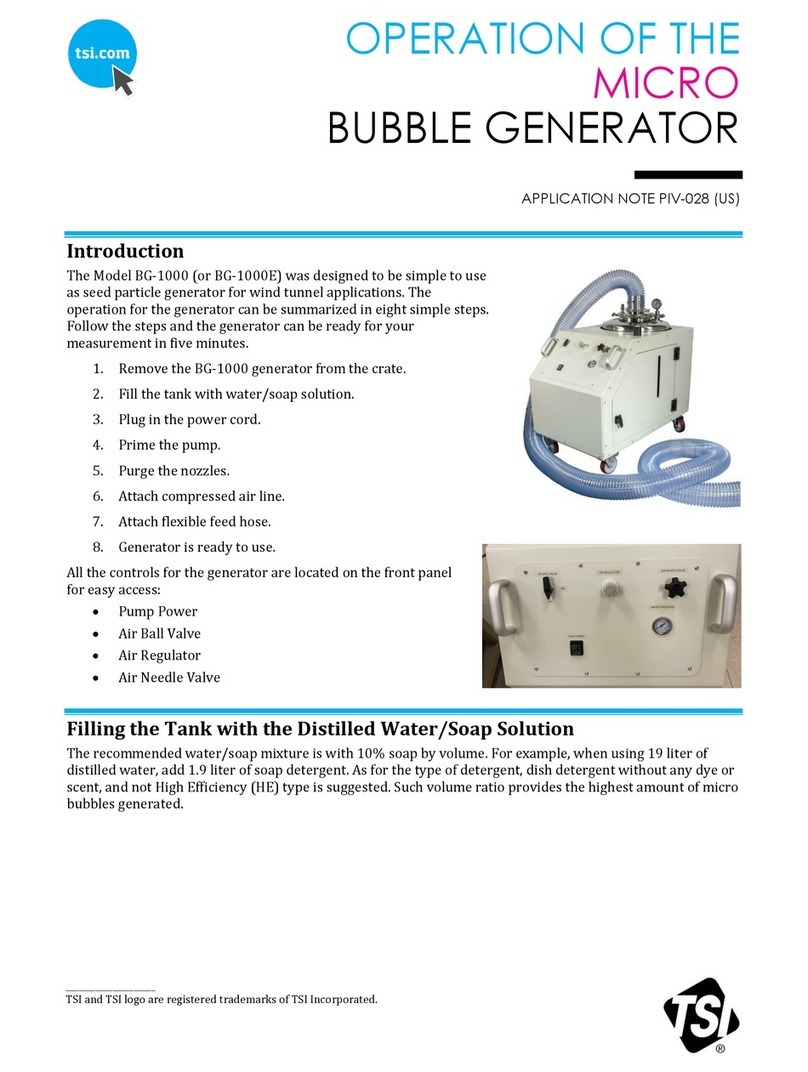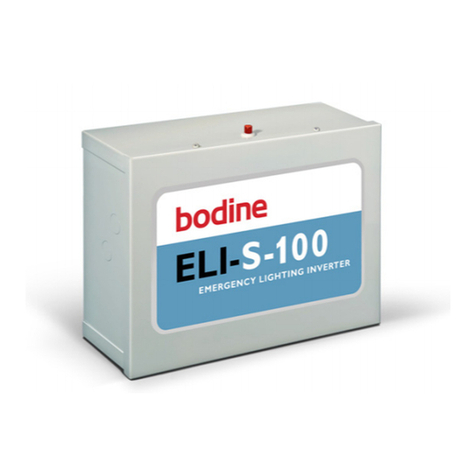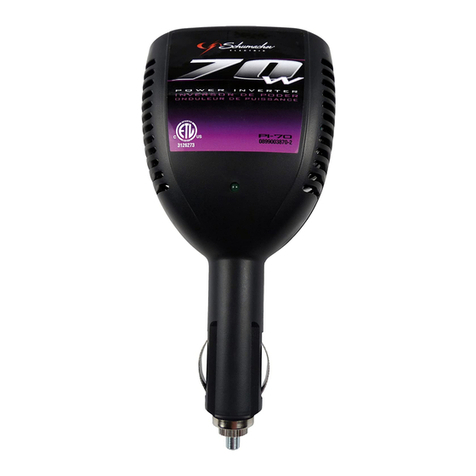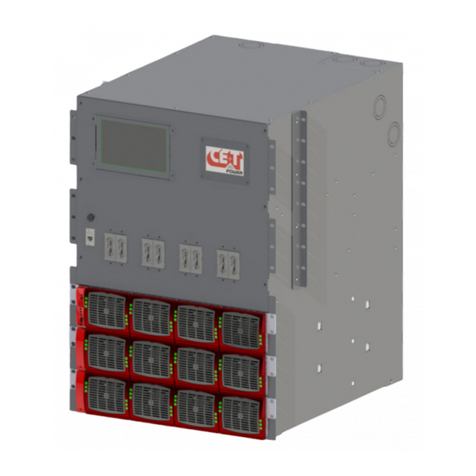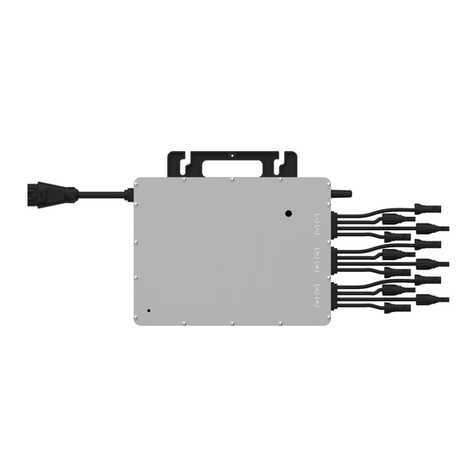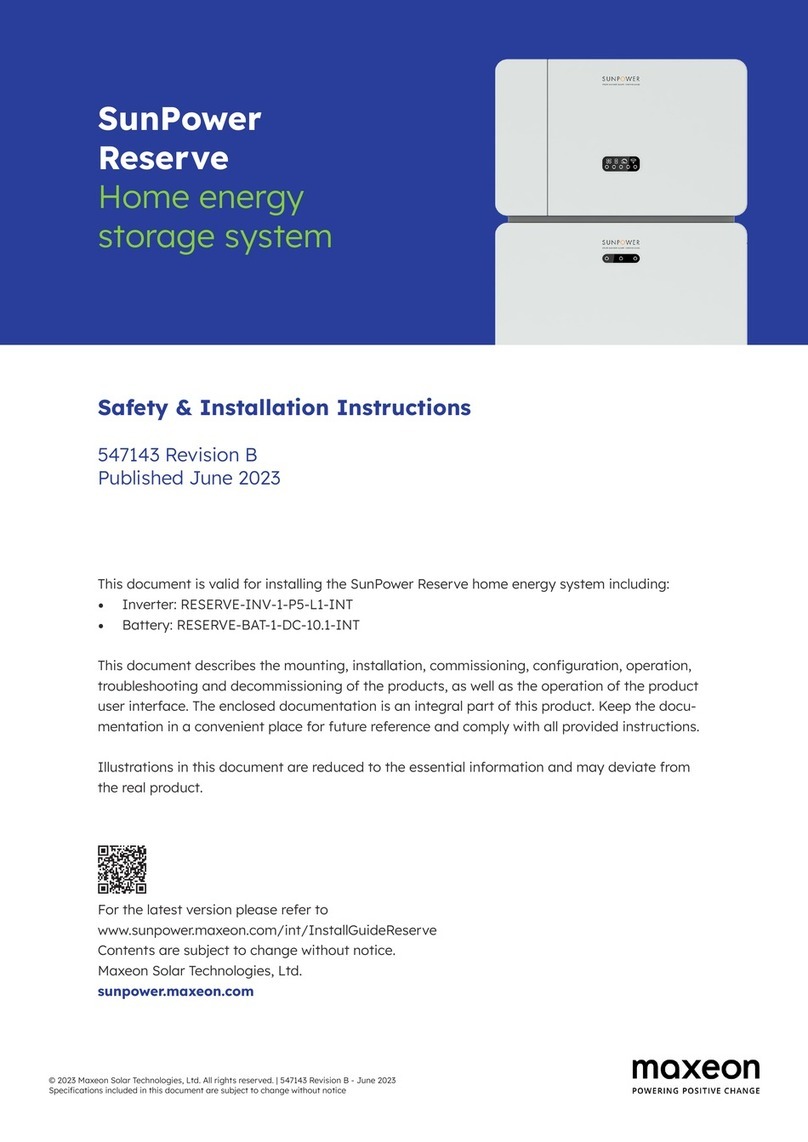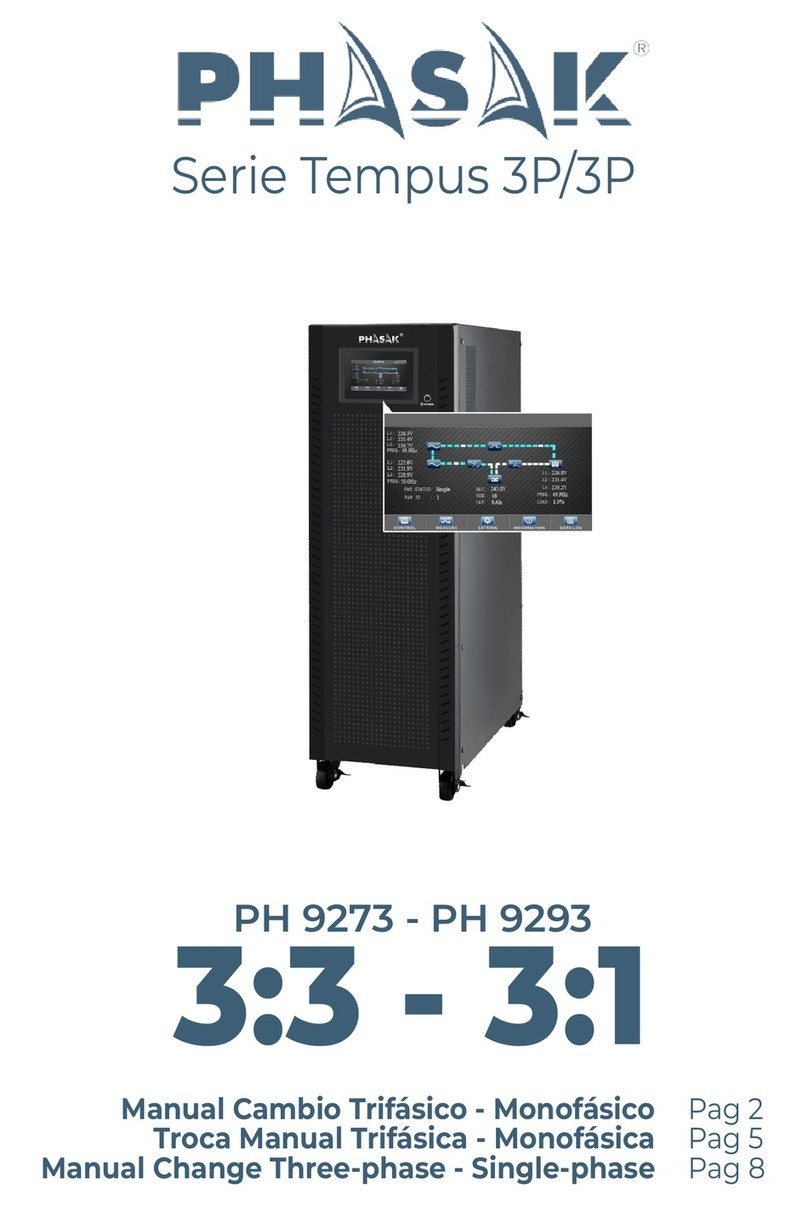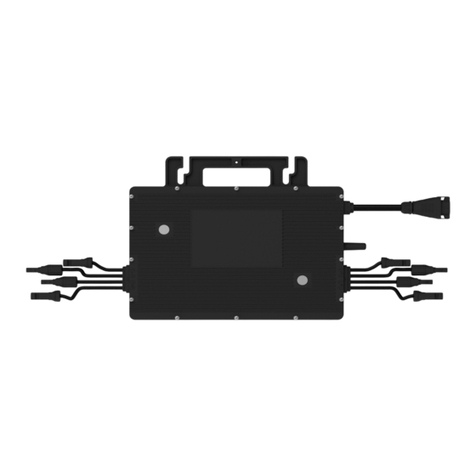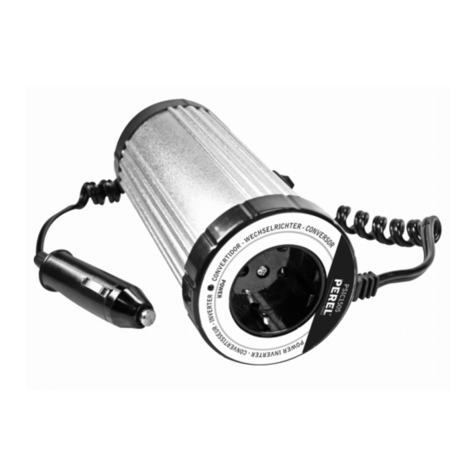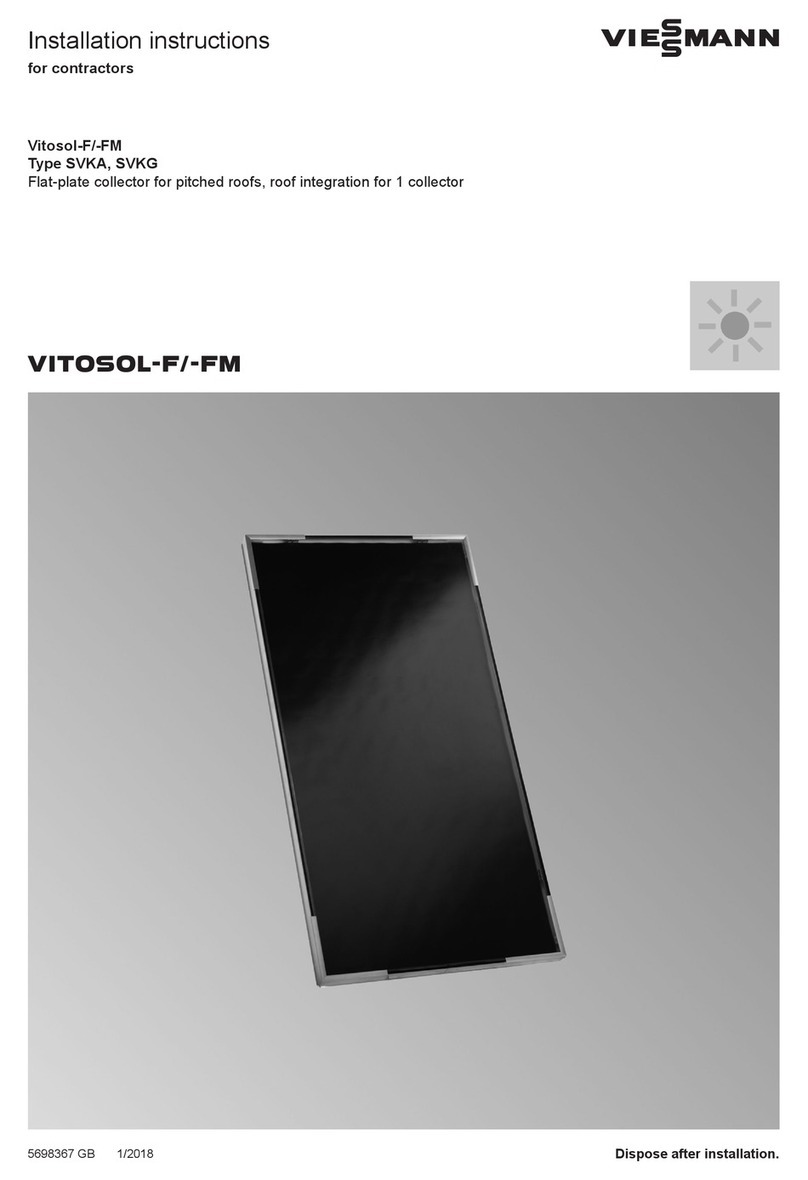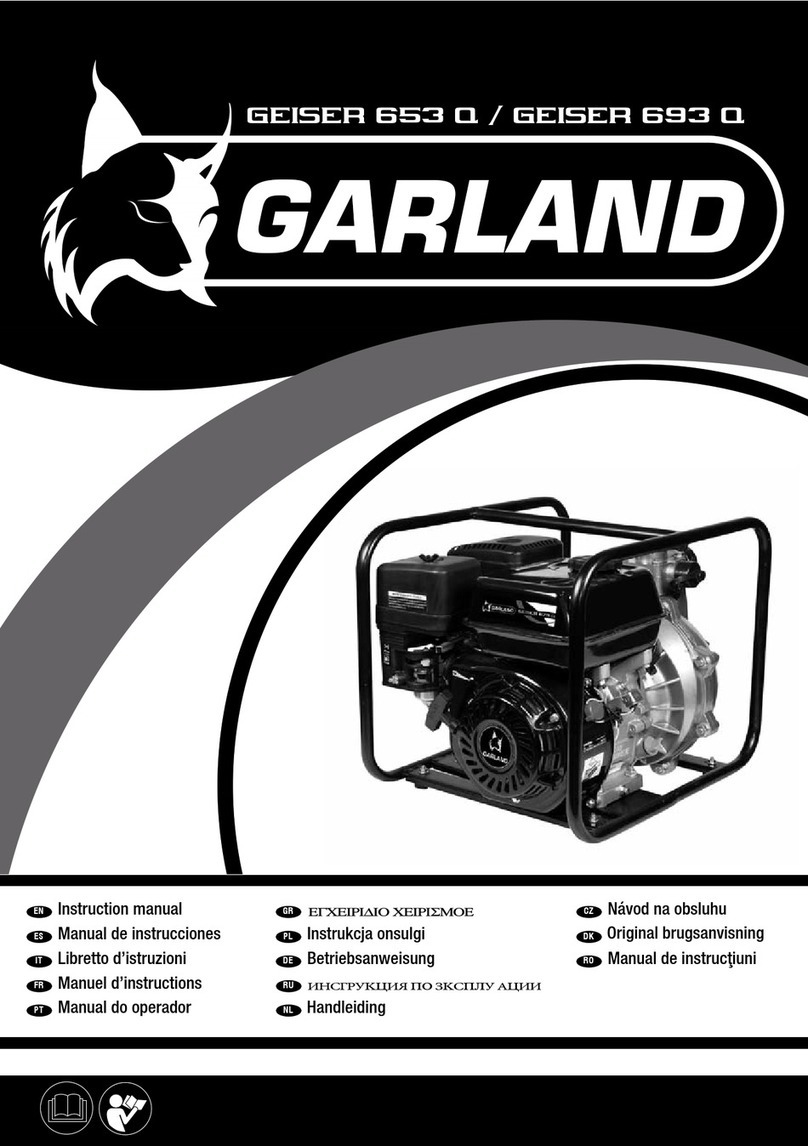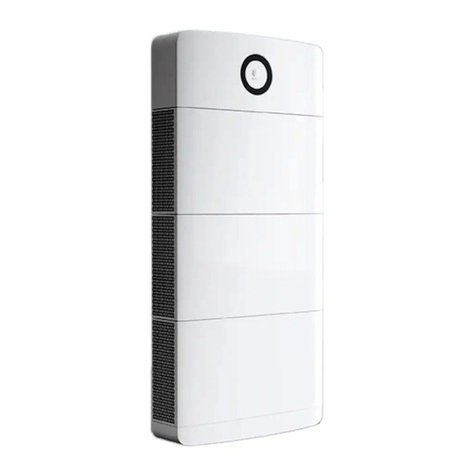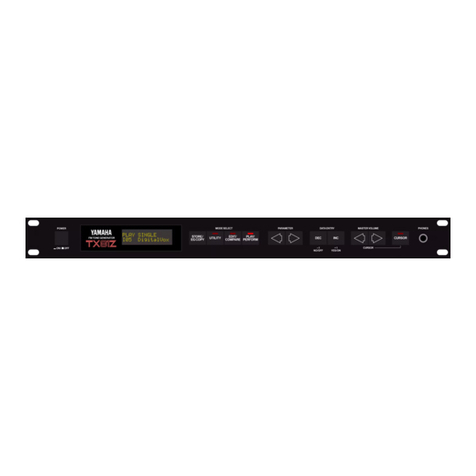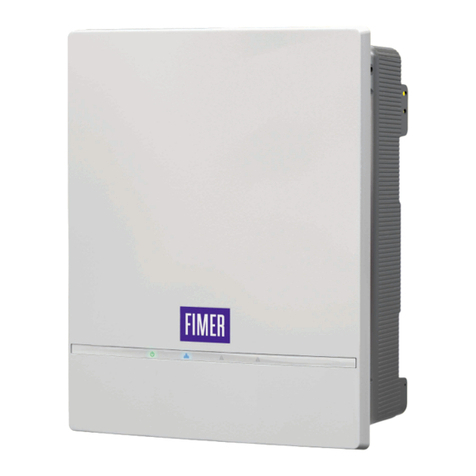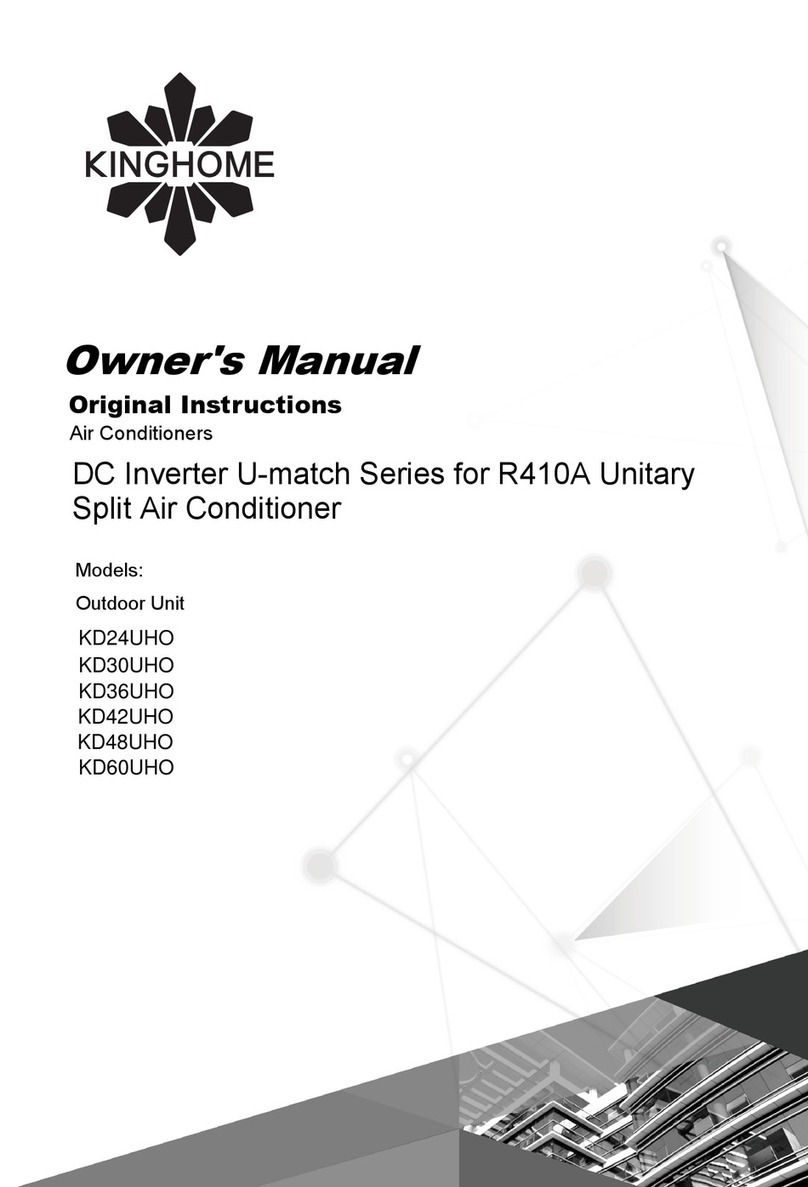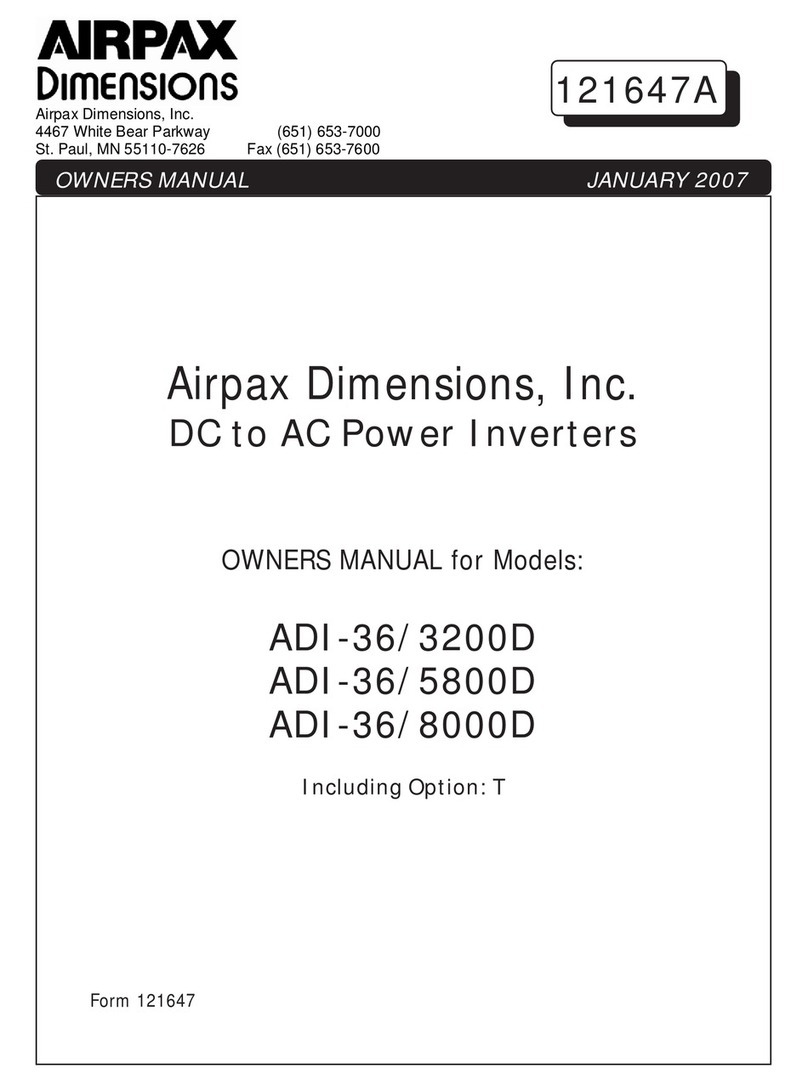TSI Incorporated 3480 User manual

Aerosol Generators
Model 3480
Electrospray Aerosol Generator
User’s Manual
P/N 1933793, Revision E
March 2008


Product Overview 1
Unpacking and Setting
Up the System
2
Controls, Indicators, and
Connectors
3
Operating the
Electrospray
4
Model 3480
Electrospray
Aerosol Generator
User’s Manual
Maintenance 5
Troubleshooting 6
Contacting Customer
Service
7
Appendixes

iv
Manual History
The following is a manual history of the Model 3480 Electrospray
Aerosol Generator (Part Number 1933793).
Revision Date
Preliminary Version March 1999
Final May 1999
A July 2000
B February 2002
C October 2002
D October 2003
E March 2008
In Revision A, TSI’s Limitation of Warranty and Liability was
updated.
In Revision B, Table 2-1 was updated, Appendix C was removed,
and a few minor corrections were made throughout manual.
In Revision C, TSI’s phone numbers and address were updated.
Front and back manual covers were updated.
In Revision D, directions for replacing the capillaries were updated
due to a change to the capillary design. Miscellaneous changes
were made throughout manual and pictures were updated.
In Revision E, manual was updated with new logo and look. The
equation used for calculating final particle diameter Dpwhen using
a sucrose solution with the Electrospray was corrected and
simplified. Relationship between viscosity of solution and
concentration was removed from the discussion and reader was
referred to a related publication for more information.

v
Warranty
Part Number 1933793 / Revision E / March 2007
Copyright ©TSI Incorporated / 2008 / All rights reserved.
Address TSI Incorporated / 500 Cardigan Road / Shoreview, MN 55126 / USA
Fax No. 651-490-3824
Limitation of Warranty
and Liability
(effective July 2000)
Seller warrants the goods sold hereunder, under normal use and service as
described in the operator's manual, shall be free from defects in workmanship and
material for (12) months, or the length of time specified in the operator's manual,
from the date of shipment to the customer. This warranty period is inclusive of any
statutory warranty. This limited warranty is subject to the following exclusions:
a. Hot-wire or hot-film sensors used with research anemometers, and certain other
components when indicated in specifications, are warranted for 90 days from
the date of shipment.
b. Parts repaired or replaced as a result of repair services are warranted to be free
from defects in workmanship and material, under normal use, for 90 days from
the date of shipment.
c. Seller does not provide any warranty on finished goods manufactured by others
or on any fuses, batteries or other consumable materials. Only the original
manufacturer's warranty applies.
d. Unless specifically authorized in a separate writing by Seller, Seller makes no
warranty with respect to, and shall have no liability in connection with, goods
which are incorporated into other products or equipment, or which are modified
by any person other than Seller.
The foregoing is IN LIEU OF all other warranties and is subject to the LIMITATIONS
stated herein. NO OTHER EXPRESS OR IMPLIED WARRANTY OF FITNESS FOR
PARTICULAR PURPOSE OR MERCHANTABILITY IS MADE.
TO THE EXTENT PERMITTED BY LAW, THE EXCLUSIVE REMEDY OF THE USER
OR BUYER, AND THE LIMIT OF SELLER'S LIABILITY FOR ANY AND ALL LOSSES,
INJURIES, OR DAMAGES CONCERNING THE GOODS (INCLUDING CLAIMS BASED
ON CONTRACT, NEGLIGENCE, TORT, STRICT LIABILITY OR OTHERWISE) SHALL
BE THE RETURN OF GOODS TO SELLER AND THE REFUND OF THE PURCHASE
PRICE, OR, AT THE OPTION OF SELLER, THE REPAIR OR REPLACEMENT OF THE
GOODS. IN NO EVENT SHALL SELLER BE LIABLE FOR ANY SPECIAL,
CONSEQUENTIAL OR INCIDENTAL DAMAGES. SELLER SHALL NOT BE
RESPONSIBLE FOR INSTALLATION, DISMANTLING OR REINSTALLATION COSTS
OR CHARGES. No Action, regardless of form, may be brought against Seller more
than 12 months after a cause of action has accrued. The goods returned under
warranty to Seller's factory shall be at Buyer's risk of loss, and will be returned, if at
all, at Seller's risk of loss.
Buyer and all users are deemed to have accepted this LIMITATION OF WARRANTY
AND LIABILITY, which contains the complete and exclusive limited warranty of
Seller. This LIMITATION OF WARRANTY AND LIABILITY may not be amended,
modified or its terms waived, except by writing signed by an Officer of Seller.
Service Policy Knowing that inoperative or defective instruments are as detrimental to TSI as they
are to our customers, our service policy is designed to give prompt attention to any
problems. If any malfunction is discovered, please contact your nearest sales office
or representative, or call TSI’s Customer Service department at 1-800-874-2811
(USA) or (651) 490-2811.


vii
Contents
Manual History ......................................................................iv
Warranty.................................................................................v
Safety ....................................................................................xi
Labels ..................................................................................... xi
Description of Caution/Warning Symbols .............................. xii
Caution ............................................................................... xii
Warning ............................................................................. xiii
Caution or Warning Symbols.............................................. xiii
Radiation Safety.................................................................... xiii
Chemical Safety .....................................................................xiv
Electrical Safety ......................................................................xv
About This Manual .............................................................. xvii
Purpose.................................................................................xvii
Related Product Literature ....................................................xvii
Getting Help..........................................................................xvii
Submitting Comments .........................................................xviii
CHAPTER 1 Product Overview..............................................1-1
Product Description ..............................................................1-1
Applications ..........................................................................1-2
How the Electrospray Operates .............................................1-2
CHAPTER 2 Unpacking and Setting Up the System...............2-1
Packing List ..........................................................................2-1
Mounting the Instrument ......................................................2-2
Ventilation Requirements ...................................................2-2
Checking the Zero of the Pressure Gauge ...........................2-3
Power Connection .................................................................2-3
Analog Output ......................................................................2-4
Filtered Air Input ..................................................................2-4
CO2Input..............................................................................2-4
Installing the Ionizer .............................................................2-5
CHAPTER 3 Controls, Indicators, and Connectors ................3-1
Front Panel ...........................................................................3-1
LED Displays .....................................................................3-1
Voltage Adjustment Knob ...................................................3-2
Indicators...........................................................................3-2
Rotameters.........................................................................3-3
Pressure Regulator and Gauge ...........................................3-3
Pressure Chamber..............................................................3-3
Viewing Window .................................................................3-3
Ionizer Retainer ..................................................................3-3
Back Panel ............................................................................3-4
Aerosol Exit........................................................................3-4
Analog Output....................................................................3-5

viii Model 3480 Electrospray Aerosol Generator
AC Power Connector........................................................... 3-5
Filtered Air Inlet .................................................................3-5
CO2Inlet ............................................................................3-5
Internal Components ............................................................3-6
Capillary ............................................................................3-6
Electrospray Chamber........................................................3-6
High-Voltage Fitting and Shield .......................................... 3-6
Power Supply .....................................................................3-7
Main PCB...........................................................................3-7
High-Voltage Supply Module ..............................................3-7
Interlock Switch .................................................................3-8
Filters ................................................................................3-8
CHAPTER 4 Operating the Electrospray ............................... 4-1
Preparing Samples ................................................................4-1
Preparing a Buffer Solution ................................................4-2
Measuring and Adjusting Conductivity...............................4-2
Measuring and Adjusting pH ..............................................4-3
Typical Solutes...................................................................4-3
Starting Up the Electrospray .................................................4-5
Generating Aerosols ..............................................................4-6
Changing Samples ................................................................4-8
Shutting Down the Electrospray............................................4-8
CHAPTER 5 Maintenance..................................................... 5-1
Periodic Maintenance ............................................................5-1
Purging the Capillary..........................................................5-1
Cleaning the Orifice Plate ...................................................5-3
Cleaning the Aerosol Exit Port ............................................5-4
Cleaning the Viewing Window Lens ....................................5-4
Replacing the Ionizer .......................................................... 5-5
Cleaning the Electrospray Chamber ...................................5-6
Performing an Air Leak Test ...............................................5-8
Cleaning the Pressure Chamber .......................................5-10
Special Maintenance ...........................................................5-12
Removing the Capillary ....................................................5-12
Cleaning the Capillary Tip ................................................5-14
Installing the Capillary .....................................................5-14
Adjusting the Position of the Capillary Tip........................5-15
Adjusting the Position of the Capillary and the
Platinum Wire in the Pressure Chamber........................ 5-15
Reversing the High-Voltage Polarity.................................. 5-16
Cleaning the Pressure Regulator ......................................5-19
Cleaning the Rotameters ..................................................5-19
Replacing the Filters.........................................................5-19
Replacement Parts ..............................................................5-19
CHAPTER 6 Troubleshooting................................................ 6-1
Electrospray Operation is Unstable .......................................6-1
Unplugging the Capillary.......................................................6-3
Applying Back Pressure to the Capillary.............................6-3
CHAPTER 7 Contacting Customer Service............................ 7-1
Technical Contacts................................................................ 7-1
Returning the Electrospray for Service ..................................7-1

Contents ix
APPENDIX A Model 3480 Specifications ...............................A-1
Pressure Regulator Maintenance ........................................A-2
Rotameter Maintenance......................................................A-3
APPENDIX B Theory of Operation.........................................B-1
System Description .............................................................. B-1
Capillary Flow Characteristics.............................................. B-2
Calculating Primary Droplet Diameter.................................. B-4
Electrospray Chamber.......................................................... B-4
Equilibrium Charging Theory ............................................... B-5
Air and CO2Flow Control ..................................................... B-7
Voltage and Current Measurement....................................... B-9
Voltage Measurement ........................................................ B-9
Current Measurement ....................................................... B-9
Selected References.............................................................. B-9
Index
Reader’s Comments
Figures
S-1 Location of Warning and Information Labels.......................xii
1-1 Model 3480 Electrospray Aerosol Generator ..................... 1-1
2-1 Bottom View of Electrospray Aerosol Generator Showing
Location of Rubber Feet................................................. 2-2
2-2 Installing the Ionizer......................................................... 2-6
3-1 Front Panel of the Model 3480 Electrospray Aerosol
Generator ...................................................................... 3-2
3-2 Back Panel of the Model 3480 Electrospray Aerosol
Generator ...................................................................... 3-4
3-3 ANALOG OUTPUT Pin Designations.................................. 3-5
3-4 Main Internal Components ............................................... 3-7
4-1 Inserting a Sample Vial into the Pressure Chamber .......... 4-6
4-2 Three Views of Capillary Tip Through the Viewing
Window ......................................................................... 4-7
5-1 Inlet Fitting....................................................................... 5-3
5-2 Viewing Window Assembly................................................ 5-5
5-3 Cleaning the Electrospray Chamber.................................. 5-7
5-4 Cleaning the Pressure Chamber ..................................... 5-11
5-5 Removing or Installing the Capillary ............................... 5-13
5-6 Determination of High-Voltage Polarity ........................... 5-17
5-7 Reversing the High Voltage Polarity ................................ 5-18
B-1 Schematic Diagram of the Electrospray ............................ B-2
B-2 Bipolar Particle Charge Distribution in Air
[Wiedensohler and Fissan, 1988] ................................... B-5
B-3 Electrospray Flow Schematic............................................ B-8

x Model 3480 Electrospray Aerosol Generator
Tables
2-1 Electrospray Packing List ................................................. 2-1
3-1 Signal Connections for Analog Output Configurations ...... 3-5
4-1 Selected Proteins and Their Diameters.............................. 4-5
5-1 Maintenance Schedule...................................................... 5-1
5-2 Replacement Parts.......................................................... 5-19
6-1 Troubleshooting if the Electrospray Operation is
Unstable........................................................................ 6-2
6-2 Troubleshooting if the Capillary has Become Plugged ....... 6-3
A-1 Specifications of the Model 3480 Electrospray Aerosol
Generator ...................................................................... 8-1
B-1 Capillary Flow Characteristics for Water at 20°C .............. B-3
B-2 Midpoint Particle Diameters and Fraction of Total
Particle Concentration that Carries +1, +2, +3, and
+4 Elementary Charges ................................................. B-6
B-3 Coefficients for Equation B-4............................................ B-7

xi
Safety
This section gives instructions to promote safe and proper handling
of the Model 3480 Electrospray Aerosol Generator.
There are no user serviceable parts inside the instrument. Refer all
repair and maintenance to a qualified technician. All maintenance
and repair information in this manual is included for use by a
qualified technician.
To prevent problems, take these precautions:
Do not remove any parts from the instrument unless you are
specifically told to do so in this manual.
Do not remove the instrument housing or covers while power is
supplied to the instrument.
!
Caution
If the Model 3480 is used in a manner not specified by the manufacturer,
the protection provided by the equipment may be impaired.
WARNING
High voltage is accessible in several locations within this instrument.
Make sure you unplug the power source before removing the cover or
performing maintenance procedures.
Labels
The Electrospray has the eight labels shown in Figure S-1. They are
described below starting from the bottom-right and moving
clockwise.
1. High-Voltage Symbol Label (interior, on high-voltage power
supply shield)
2. High-Voltage Symbol Label (interior, on power supply)
3. High-Voltage Symbol Label (interior, on power entry module)
4. Ground Symbol Label (interior, bottom, next to ground stud)
5. Caution, No User Serviceable Parts…Label (back of cabinet)

xii Model 3480 Electrospray Aerosol Generator
6. Customer Service Label (back of cabinet)
7. Serial Number Label (back of cabinet)
8. High-Voltage Symbol Label (interior, on high-voltage fitting
shield)
Figure S-1
Location of Warning and Information Labels
Description of Caution/Warning Symbols
The following symbol and an appropriate caution statement are
used throughout the manual and on the Model 3480 to draw
attention to any steps that require you to take cautionary measures
when working with the Model 3480:
Caution
!
Caution
Caution means be careful. It means if you do not follow the procedures
prescribed in this manual you may do something that might result in
equipment damage, or you might have to take something apart and start
over again. It also indicates that important information about the operation
and maintenance of this instrument is included.

Safety xiii
Warning
!
WARNING
Warning means that unsafe use of the instrument could result in serious
injury to you or cause irrevocable damage to the instrument. Follow the
procedures prescribed in this manual to use the instrument safely.
Caution or Warning Symbols
The following symbols may accompany cautions and warnings to
indicate the nature and consequences of hazards:
Warns you that uninsulated voltage within the instrument may
have sufficient magnitude to cause electric shock. Therefore,
it is dangerous to make any contact with any part inside the
instrument.
Warns you that the instrument is susceptible to electro-static
dissipation (ESD) and ESD protection procedures should be
followed to avoid damage.
Indicates the connector is connected to earth ground and
cabinet ground.
Warns you that the Model P-2042 Nuclespot Local Air
Ionizer, which is installed inside the Model 3480 Electrospray
Aerosol Generator, contains Polonium-210, a radioactive
material that is subject to the regulations of the U.S. Nuclear
Regulatory Commission and local regulations. Carefully read
the Model P-2042 Literature provided with the ionizer to
determine your legal responsibilities regarding the ionizer.
Radiation Safety
The Electrospray Aerosol Generator contains a Model P-2042
Nuclespot Local Air Ionizer with a Polonium-210 source. Under
normal circumstances, you will not come into contact with
hazardous radiation. However, take these precautions when
operating the Electrospray:

xiv Model 3480 Electrospray Aerosol Generator
The Model P-2042 Nuclespot Local Air Ionizer with a Polonium-210
source must be installed in the Electrospray for it to operate properly.
Po-210 is subject to the regulations of the U.S. Nuclear Regulatory
Commission and local regulations. Carefully read the safety information
provided with the ionizer to determine your legal responsibilities regarding
the ionizer.
WARNING
The use of controls, adjustments, or procedures other than those
specified in this manual may result in exposure to hazardous radiation.
Corrosive materials can degrade the protective coating of gold
on the ionizer inside the Electrospray. Do not operate the
Aerosol Generator with chemicals that corrode gold.
Do not operate the Aerosol Generator at temperatures above
50°C. Excess temperatures may damage the ionizer, resulting in
radioactive contamination.
The ionizer must be returned after 12 months. Contact TSI for
information and instructions on returning the ionizer.
Do not remove any parts from the Electrospray unless you are
specifically told to do so in this manual.
Chemical Safety
Observe these warnings when operating the Electrospray Aerosol
Generator:
!
WARNING
Any material or procedure mentioned in this manual is intended for use by
qualified professionals familiar with potential chemical hazards and
trained in safe laboratory procedures.
!
WARNING
Corrosive materials can degrade the stainless steel and aluminum
chamber inside the Electrospray Aerosol Generator. Do not operate the
Electrospray with chemicals that corrode stainless steel or aluminum.

Safety xv
!
WARNING
High concentrations of aerosols can be hazardous. Use a filter at the
Electrospray exit if the generated aerosol is not being used by another
instrument or in another application.
Electrical Safety
The Electrospray Aerosol Generator contains a high-voltage source
on the inside of the instrument. Under normal circumstances, you
will not come into contact with hazardous voltage. However, always
remove power from the Electrospray before removing the cover from
the instrument.
WARNING
High voltage is accessible in several locations within this instrument.
Make sure you unplug the power source before removing the cover or
performing maintenance procedures.


xvii
About This Manual
Purpose
This is an instruction manual for the operation and handling of the
Model 3480 Electrospray Aerosol Generator.
Related Product Literature
Model 3080 Electrostatic Classifier Manual (part number
1933792 TSI Incorporated)
Model 3010 Condensation Particle Counter Manual (part number
1933010 TSI Incorporated)
Model 3022A Condensation Particle Counter Manual (part
number 1933763 TSI Incorporated)
Model 3025A Ultrafine Condensation Particle Counter Manual
(part number 1933762 TSI Incorporated)
Model 3936 SMPS (Scanning Mobility Particle Sizer) Manual (part
number 1933796 TSI Incorporated)
Model 3068 Aerosol Electrometer Manual (part number 1933068
TSI Incorporated)
Getting Help
To obtain assistance with this product or to submit suggestions,
please contact TSI:
TSI Incorporated
500 Cardigan Road
Shoreview, MN 55126 U.S.A.
Fax: (651) 490-3824
Telephone: 1-800-874-2811 (USA) or (651) 490-2811

xviii Model 3480 Electrospray Aerosol Generator
Submitting Comments
TSI values your comments and suggestions on this manual. Please
use the comment sheet, on the last page of this manual, to send us
your opinion on the manual’s usability, to suggest specific
improvements, or to report any technical errors.
If the comment sheet has already been used, send your comments
to:
TSI Incorporated
500 Cardigan Road
Shoreview, MN 55126 U.S.A.
Fax: (651) 490-3824

1-1
CHAPTER 1
Product Overview
This chapter describes the Model 3480 Electrospray Aerosol
Generator and gives an overview of how it works.
Product Description
The Model 3480 Electrospray Aerosol Generator, shown in
Figure 1-1, generates monodisperse aerosols in the size range of 2
to 100 nanometers. Beginning with a liquid and adding a solute to
form a solution or suspension, the Electrospray converts the
sample to an aerosol by charging the liquid, pushing it through a
capillary, and exerting an electric field at the capillary tip. The
liquid evaporates from the droplets formed at the capillary tip while
the charge on each droplet is reduced by an ionizer.
In addition to the vast combination of solutes that could be used in
the Electrospray to generate aerosols, the user has the ability to
control the liquid flow rate through the capillary, the intensity of
the electric field at the capillary tip, and the amount of time the
aerosol is exposed to the ionizer.
Figure 1-1
Model 3480 Electrospray Aerosol Generator

1-2 Model 3480 Electrospray Aerosol Generator
Applications
The successful use of the electrospray method to generate
monodisperse aerosol has been documented in many publications.
Although the basic principles are well understood, many of the
details explaining how different operating parameters affect the
electrospray method remain to be discovered. Known applications
for this instrument include:
Studies of nano-aerosols
Instrument calibration
Dispersion of nanometer-sized powders for nano-powder sizing
Aerosol analysis in the macromolecular and submicrometer
range
Research involving parameters that influence the electrospray
method
How the Electrospray Operates
A sample solution is stored in a cone-shaped vial, enclosed in a
cylindrical pressure chamber. The chamber accommodates a
capillary and a high-voltage, platinum wire, both of which are
immersed in the solution. A differential pressure causes the
solution to be pushed through the capillary.
An electrical field pulls the charged solution out of the capillary
exit, forming droplets that are mixed with clean air and CO2. This
produces a sheath flow, which transports the droplets to the
Electrospray chamber. The highly charged droplets are neutralized
by a radioactive ionizer (Polonium-210), and the liquid is
evaporated before the aerosol exits the instrument.
Table of contents
Other TSI Incorporated Inverter manuals
